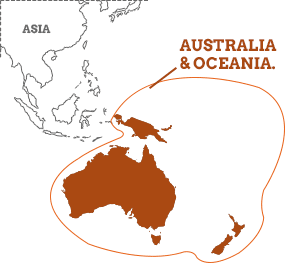Best time to go to Oceania
With boundaries stretching from Southeast Asia to Hawaii, Oceania incorporates Australasia and is in the southern hemisphere when it comes to seasonal variations – with more tropical climes the further north you go. Winter falls between June to August with summer from December through to February. Aside from the seasons, other factors need to be taken into account if you're looking for the best time to go to Australasia and Oceania as from swimming with humpback whales in Tonga to knowing when stingers congregate around the Great Barrier Reef, this maybe the world's smallest continent but it still requires a very big calendar.

Is summer the best time to see dolphins in Fiji or New Zealand? How will Australia's festivals impact on your travel plans? When can you expect to hear the mating call of a cicadabird in the Solomon Islands? And which regions are affected by cyclones? Research should be part and parcel of a traveling experience and lets you work out a best time for Australia and Oceania vacations that's personal to you.







Month by month guide to visiting Oceania
B&B self drive tour of Tasmania, meet the locals
Self-drive staying in Tasmania's most charming B&Bs
From
AU $1495 to AU $6000
10 days
ex flights
French Polynesia cruise in the South Pacific
Sail this Polynesian paradise visiting at least 12 islands
From
£2798 to £3968
12 days
ex flights
Australia tour, outback & reef
Tailor-made Tour to Australia's Coast, Outback & Reef.
From
US $7995
25 days
ex flights
Swim with humpback whales in Tahiti
Snorkel with gentle humpback whales in a warm tropical seas!
From
AU $5830 to AU $6355
8 days
ex flights
New Zealand vacation, small group
Combining the best of New Zealand's North and South Islands.
From
US $6990 to US $7530
19 days
ex flights
New Zealands Subantarctic Islands cruise
Wildlife voyage to the Subantarctic inc Macquarie Island
From
US $9250 to US $10725
12 days
ex flights
Travel Team
If you'd like to chat about Oceania or need help finding a vacation to suit you we're very happy to help.
1-866-821-6866
Call toll free
Calling from outside the USA
























